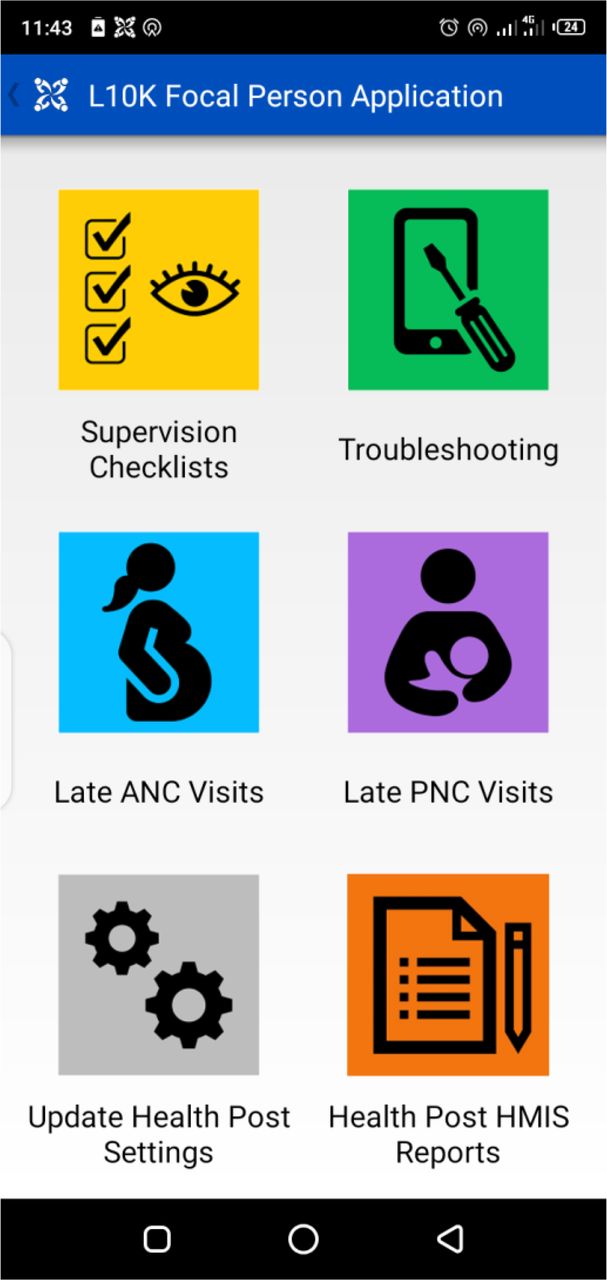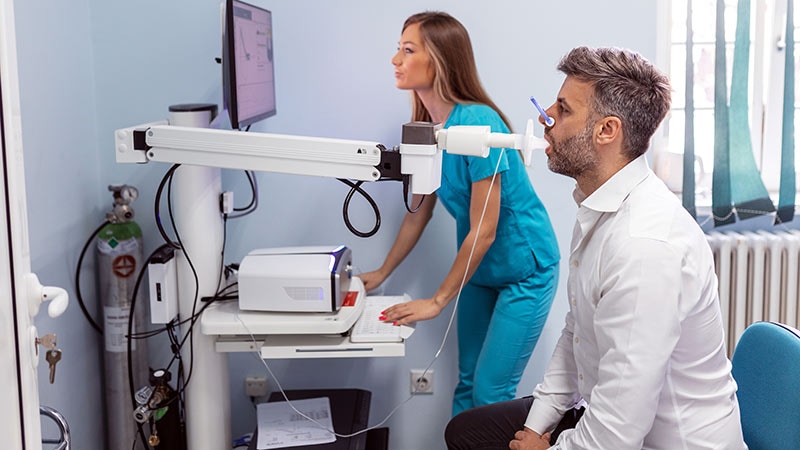Expanding Access: A Holistic Health Care Approach in Rural Ethiopia – JSI

Report on the Enhancement of Primary Health Care in Ethiopia and its Contribution to Sustainable Development Goals
Introduction: Aligning with SDG 3 – Good Health and Well-being
A strategic initiative is underway in Ethiopia’s Oromia Region to transform the delivery of primary health care, directly contributing to the achievement of Sustainable Development Goal 3 (Good Health and Well-being). This effort focuses on establishing comprehensive health posts to replace previously under-resourced facilities. The objective is to advance Universal Health Coverage (UHC), a key target of SDG 3, by providing accessible, quality health services to rural and underserved populations, thereby addressing critical health disparities and contributing to SDG 10 (Reduced Inequalities).
Project Framework and Strategic Objectives
Under the direction of the Ethiopian Ministry of Health, the project involves upgrading existing rural health posts into comprehensive facilities designed to meet the most pressing local health needs. This model is foundational to achieving several SDG targets.
Core Services Aligned with SDG Targets
- Maternal and Reproductive Health (SDG 3.1 & 3.7): Provision of antenatal care, labor and delivery services, and family planning directly supports the reduction of maternal mortality and ensures access to sexual and reproductive health care, which also advances SDG 5 (Gender Equality).
- Child Health (SDG 3.2): Offering routine pediatric outpatient care, early childhood immunizations, nutrition support, and treatment for sick children is critical for ending preventable deaths of newborns and children under five.
- Universal Health Coverage (SDG 3.8): The posts are stocked with a full list of essential medicines and equipment, ensuring access to safe, effective, and affordable medical resources for all.
Strengthening Health Systems and Community Engagement (SDG 3.c & SDG 10)
To ensure operational capacity and community trust, the initiative focuses on two key areas:
- Human Resources for Health: Each facility is staffed with a health officer, clinical nurse, midwife, health extension workers, a pharmacist, and a lab technician, directly addressing SDG 3.c by strengthening the health workforce.
- Community Partnership: Collaboration with women’s development groups and village health leaders builds trust and ensures services are community-informed, promoting the social inclusion central to SDG 10.
Implementation through Multi-Stakeholder Partnerships (SDG 17)
The “Improve Primary Health Care Service Delivery” project, operational since 2022, exemplifies SDG 17 (Partnerships for the Goals). It is a collaborative effort between the Ethiopian Ministry of Health, JSI, Amref Health Africa, and the Gates Foundation. Over three years, this partnership has achieved the following:
- Equipped comprehensive health posts with necessary infrastructure and essential medicines.
- Trained nearly 1,000 health workers on redefined service packages.
- Fostered community trust in the new service delivery platform through targeted engagement.
Key Outcomes and Progress Towards SDG Targets (April 2022 – April 2025)
The support from JSI has led to the successful transition of 25 health posts into fully functional comprehensive facilities. Data collected between April 2022 and April 2025 demonstrates significant progress toward specific SDG targets:
- Progress on SDG 3.7 & 5.6: Family planning services were provided to 74,036 clients.
- Progress on SDG 3.1: Antenatal care was delivered to 8,706 women, and labor and delivery services were provided for 5,014 mothers.
- Progress on SDG 3.2: Penta1 immunizations were administered to 15,146 children.
The comprehensive health post model has proven to be an effective approach for increasing access to high-quality health care in Ethiopia’s remote areas, making a direct and measurable contribution to achieving SDG 3 and reducing the health-related inequalities targeted by SDG 10.
Analysis of Sustainable Development Goals in the Article
1. Which SDGs are addressed or connected to the issues highlighted in the article?
The article primarily addresses two Sustainable Development Goals (SDGs):
- SDG 3: Good Health and Well-being: This is the central theme of the article. The entire text focuses on the efforts by the Ethiopian Ministry of Health and its partners to improve primary health care services. The initiative aims to increase the “accessibility and quality of primary health services,” particularly for maternal and child health, which is a core component of SDG 3. The article details the establishment of comprehensive health posts that provide essential services like “antenatal care, labor and delivery services, routine adult and pediatric outpatient care, early childhood immunizations, nutrition support, and treatment for sick children.”
- SDG 17: Partnerships for the Goals: The article highlights a multi-stakeholder partnership as the driving force behind the project. It explicitly mentions that “JSI has implemented the Gates Foundation-funded Improve Primary Health Care Service Delivery project in partnership with Amref Health Africa.” This collaboration between non-governmental organizations (JSI, Amref), a private foundation (Gates Foundation), and a national government (Ethiopian Ministry of Health) is a clear example of the partnerships required to achieve sustainable development, as outlined in SDG 17.
2. What specific targets under those SDGs can be identified based on the article’s content?
Several specific targets under SDG 3 and SDG 17 are directly relevant to the content of the article:
- Target 3.1: By 2030, reduce the global maternal mortality ratio to less than 70 per 100,000 live births.
- Explanation: The article states that the comprehensive health posts provide “antenatal care, labor and delivery services” and employ midwives. These services are crucial for preventing maternal deaths. The report that “labor and delivery services to 5,014 mothers” were provided directly contributes to this target.
- Target 3.2: By 2030, end preventable deaths of newborns and children under 5 years of age.
- Explanation: The project addresses this target by providing “early childhood immunizations, nutrition support, and treatment for sick children.” The specific mention of administering “Penta1 immunizations to 15,146 children” is a direct action aimed at reducing child mortality from vaccine-preventable diseases.
- Target 3.7: By 2030, ensure universal access to sexual and reproductive health-care services, including for family planning, information and education.
- Explanation: The article explicitly mentions that the health posts “provided family planning services to 74,036 clients,” which directly aligns with this target’s goal of ensuring access to family planning.
- Target 3.8: Achieve universal health coverage (UHC), including financial risk protection, access to quality essential health-care services and access to safe, effective, quality and affordable essential medicines and vaccines for all.
- Explanation: This is the overarching goal of the initiative. The article describes the transformation of health posts in “rural, previously underserved communities” to provide “faster, respectful care, with stocked pharmacies, trained staff, and community-tailored services.” This effort to expand access to quality primary care is the definition of progressing towards UHC.
- Target 3.b: Support the research and development of vaccines and medicines…and provide access to affordable essential medicines and vaccines.
- Explanation: The article supports this target by highlighting that the health posts are required to “stock a full list of essential medicines and equipment” and have successfully “administered Penta1 immunizations to 15,146 children,” ensuring access to essential vaccines and medicines at the community level.
- Target 3.c: Substantially increase health financing and the recruitment, development, training and retention of the health workforce in developing countries.
- Explanation: The project directly addresses the health workforce by having “trained nearly 1,000 health workers” and ensuring each post is staffed with a “health officer, clinical nurse, midwife, two health extension workers, a pharmacist, a lab technician.” This strengthens the health system by increasing the number and capacity of trained professionals in rural areas.
- Target 17.16: Enhance the global partnership for sustainable development, complemented by multi-stakeholder partnerships that mobilize and share knowledge, expertise, technology and financial resources.
- Explanation: The project is a model of this target in action. It is a partnership between “JSI,” “Amref Health Africa,” the “Gates Foundation,” and the “Ministry of Health,” combining international expertise, funding, and local governance to achieve a common health goal.
3. Are there any indicators mentioned or implied in the article that can be used to measure progress towards the identified targets?
Yes, the article provides several quantitative and qualitative indicators that can be used to measure progress:
- Indicator for Target 3.1 & 3.2 (Maternal and Child Health): The article provides specific output numbers that serve as progress indicators. These include:
- Number of women receiving antenatal care: 8,706
- Number of mothers receiving labor and delivery services: 5,014
- Number of children receiving Penta1 immunizations: 15,146
- Indicator for Target 3.7 (Family Planning): A direct indicator is provided:
- Number of clients receiving family planning services: 74,036
- Indicator for Target 3.8 (Universal Health Coverage): Progress is indicated by:
- The number of health posts transitioned into fully functional, comprehensive health posts: 25
- The list of available services (“antenatal care, labor and delivery services, routine adult and pediatric outpatient care,” etc.) indicates the scope of service coverage.
- Qualitative feedback from “in-depth interviews with both clients and health workers to assess their experiences of care” measures the quality aspect of UHC.
- Indicator for Target 3.b (Access to Medicines/Vaccines): The indicator is the presence of “stocked pharmacies” and a “full list of essential medicines,” along with the specific number of immunizations administered (15,146).
- Indicator for Target 3.c (Health Workforce): A clear indicator of progress is the number of health workers trained: “nearly 1,000.” Another is the defined staffing model for each post, which increases health worker density in rural areas.
4. Summary Table of SDGs, Targets, and Indicators
| SDGs | Targets | Indicators Identified in the Article |
|---|---|---|
| SDG 3: Good Health and Well-being | Target 3.1: Reduce global maternal mortality. | Number of women receiving antenatal care (8,706); Number of mothers receiving labor and delivery services (5,014). |
| SDG 3: Good Health and Well-being | Target 3.2: End preventable deaths of newborns and children under 5. | Number of children receiving Penta1 immunizations (15,146); Provision of nutrition support and treatment for sick children. |
| SDG 3: Good Health and Well-being | Target 3.7: Ensure universal access to sexual and reproductive health-care services. | Number of clients provided with family planning services (74,036). |
| SDG 3: Good Health and Well-being | Target 3.8: Achieve universal health coverage (UHC). | Number of comprehensive health posts established (25); List of essential services provided; Qualitative feedback from client and health worker interviews. |
| SDG 3: Good Health and Well-being | Target 3.b: Provide access to affordable essential medicines and vaccines. | Requirement for health posts to stock a “full list of essential medicines”; Number of Penta1 immunizations administered (15,146). |
| SDG 3: Good Health and Well-being | Target 3.c: Increase health workforce training and retention. | Number of health workers trained (“nearly 1,000”); Defined staffing model for each post (health officer, nurse, midwife, etc.). |
| SDG 17: Partnerships for the Goals | Target 17.16: Enhance multi-stakeholder partnerships. | Existence of a partnership between JSI, Amref Health Africa, the Gates Foundation, and the Ethiopian Ministry of Health. |
Source: jsi.org

What is Your Reaction?
 Like
0
Like
0
 Dislike
0
Dislike
0
 Love
0
Love
0
 Funny
0
Funny
0
 Angry
0
Angry
0
 Sad
0
Sad
0
 Wow
0
Wow
0































































.jpg?#)









